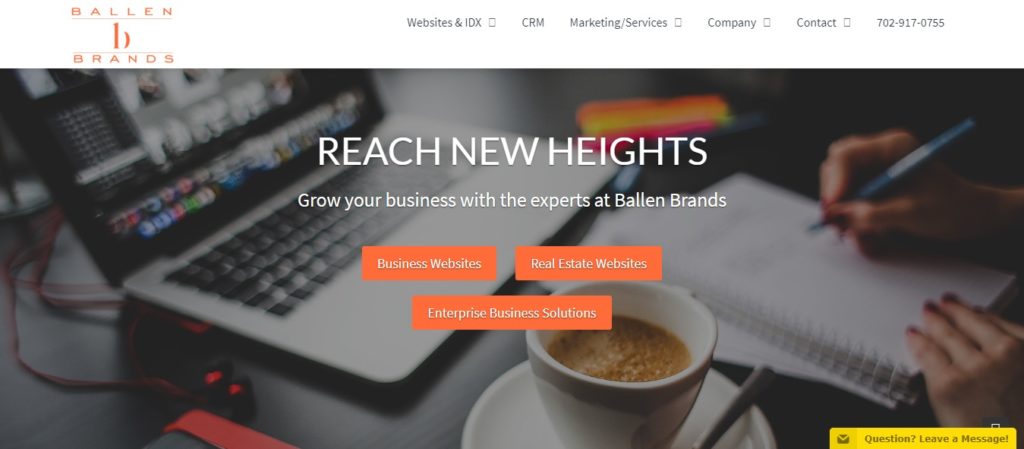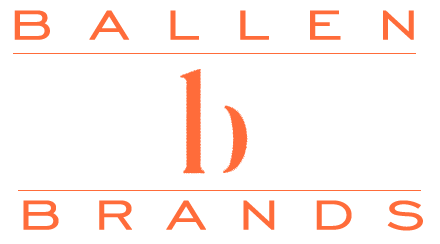? 9 Minute Read
Having a website that you’re proud of is essential. When your online presence is brand new, it’s exciting, fresh, crisp, and clean. But over time, websites tend to stagnate, fall out-of-date, and lose steam in the search engines. Your enthusiasm wanes.
Your website and blog fall by the wayside as the day-to-day demands of life and business take more time than you have to give. However, the staler your website becomes, the further it sinks into the internet abyss. It’s critical to take the time to show your website some love.

Create a Maintenance Plan
Many things in life are on a scheduled maintenance plan – whether it’s taking your car to get the oil changed, going to the dentist every six months, or having your hair done every few weeks. Your website is no different. It performs best and looks the sharpest when it has regular attention. It’s also like laundry: it’s never done.
Owning a website is a long-term commitment and an ongoing process, so it should evolve along with you.

Pick one day of the week, or a few hours a day, to work on an element of your website, such as reviewing and refreshing old content, checking to see if links are still working, that the images are still intact, and publishing new articles and blogs. Look for and correct any 404 Error pages. In this way, your website functions at optimal levels.
As a part of your maintenance plan, you’ll also want to make sure that your website platform, apps, plugins, and other elements are fully updated.
Enhance Your Website’s Security
Hypertext Transfer Protocol Secure, known most commonly as HTTPS, protects your website and your viewers. It guards information like user log in, passwords, and e-commerce systems where credit card information could be at risk.
As part of securing and encrypting your site, you’ll need to get a security certificate, issued by a certificate authority, to verify that your organization owns the web address.
Users can tell when a website is secure in two ways. First, the web address starts with HTTPS rather than. HTTP. The letter S at the end indicates that the site is secure. Second, a padlock icon appears next to the URL in the address bar. By clicking that padlock, users can view security information about your website and look at your security certificate.
Check the Basics
It might not spring to mind to check the obvious, but it’s important to make sure your contact information hasn’t changed since you last updated your website. Check your headers, footers, and contact us page to make sure your customers know how to reach you.
When’s the last time you updated your About Us page? Is the information there still relevant? Can the writing be improved upon? Is it time to edit and expand your company’s story?

The same applies to your professional bio. Is it written in the first person? Was it a struggle to write about yourself? Bios perform best when written in third-person and feature your achievements and specialties, along with a touch of information about who you are. It may be time for a rewrite, which you can easily outsource to a professional content provider.
Is your profile image current and professional? Your picture says a lot about you, giving website viewers something to connect to and a way to get a feel for who you are. It’s your first impression.
Your profile picture should look like you do now, so if you’re holding on to that ten-year-old glamour shot because it looks so good, it’s time to refresh. And be conservative with Photoshop and filters. You want your clients to recognize you.
Search Engine Optimization
You may be familiar with the idea of optimizing your blog posts and articles for search, but there’s also a bunch of SEO in the back end of your website that might be out of date as well.
These items include, but are not limited to, alt tags, console errors, meta descriptions, robots.txt files, site map errors, title tags, and more.
If you’re not sure how to manage those aspects of your website, consider hiring a professional who understands website search engine optimization’s critical factors.
Enhance User Experience
Two primary factors significantly influence the success of your website: load time and mobile responsiveness.
You have approximately two seconds, according to CrazyEgg.com, to capture a viewer’s attention. They’ll quickly bounce off your page if your content isn’t loading, which also hurts your search engine ratings.
Most website viewers are accustomed to having a page load at lightning speed. They don’t want to sit and wait around while your website takes its sweet time to load.
You can optimize page speed by making sure your multimedia is formatted correctly and reducing the number of redirects on your website.

You can also remove any plugins that you no longer use, so they don’t weigh things down.
The majority of people will find your website via their smartphone or tablet. If your website isn’t formatted for mobile responsiveness, you may also find a higher bounce rate and low conversions.
One way to determine if your website is mobile responsive is to check it on your own phone or tablet. Look for a website theme that’s mobile responsive.
Be Clear About Your Website’s Goals
Having goals for your website is the best way to get a return on your investment. If you don’t know what job your website should be doing, you won’t know how to move forward with your digital marketing endeavors.
Take the time to make a list of all the things you want your website to do, such as raise brand awareness, generate leads, or make sales.
Look at Your Landing Pages
If you have landing pages throughout your website, revisit those, too. How are they performing for you? If they’re not doing as well as you’d hoped, there are a few ways you can show them some love.
First, make sure that the offer on the page is still timely and appealing. If your offer is for a “2019 Ultimate Guide for Home Buyers”, it’s not going to gain much traction in 2021. You’ll need to update that offer.

If your offer is current and still holds value to your users, try A/B testing the page by changing out one aspect at a time, such as the heading, subheading, checklist, button text, colors, etc. Then track and measure those results to determine which landing pages need to be refreshed.
Check in on Your Archived Content
Old blogs can become a part of your new content strategy.
Your website’s blogs and articles will be buried in the content graveyard if you don’t keep them alive with nurturing – no matter how good they are.
A good starting point is to audit your contents’ past performance using resources like Google Analytics or Clicky.com. By tracking and measuring the results of the content you’ve previously published, you can identify which pieces stand out as being popular and which pages never really caught steam in the first place.
When you discover which pieces are successful, you can give them a quick refresh, update the content a tad, republish, and then promote it again across social media.
The pieces of content that didn’t take off need to be revisited. What is different about the unpopular posts than those that users enjoyed? Try to restructure your less popular posts to be formatted more like those that performed well, update, republish, and promote again.
You can also take this opportunity to ensure that your older content is aligned with current search engine algorithms.
When reviewing older content, it’s a perfect time to make sure that each piece of content you’ve published has a compelling and current call to action. Without a call to action, your content has no purpose.
You might also A/B test your CTA buttons to find the right colors, fonts, bullet points, and other aspects to get the best results.
Have a Strategy for New Recurring Content
The energy that keeps the website machine running and escalating is the content you publish, its quality, and quantity.
Search engines (and web viewers) want to see you publish valuable content on a steady schedule. Otherwise, you fall prey to being out of sight and out of mind.
Your blog posts and articles accomplish many things simultaneously. They establish you as an expert in your industry, build trust with your audience, and grow search engine authority organically. They also give you an excellent resource for social media posts and newsletters.

It’s not enough to publish a chunk of articles all at once and then ignore the need for the next six months. To earn search engine authority and provide value to readers, you should publish timely, valuable content at least once per month, preferably weekly, and promote it across all of your social media channels – repeatedly on a set schedule.
You can use services like HootSuite.com or CoSchedule.com to schedule all of your posts to publish on designated days and times without you having to lift a finger.
It’s okay if you don’t have the time, interest, talent, or skills to produce such high-volume content. There are ample resources for ordering content, such as content farms, freelance writers, and digital marketing companies.
A good content provider can set you up on a schedule for weekly or monthly edited articles ready to publish at your convenience. But beware: not all content farms produce high-quality material. Make sure you hire writers who can bring your points across clearly and in a way that solves a problem the reader has.
Have a Content Marketing Plan
The more you publish and republish content, the fresher your website stays in the eyes of your viewers and the search engines. It can’t just be a matter of throwing up a link on social media to one of your posts every once in a while. It would be best if you had a plan.
Decide on what you’re going to publish and when. Use a content publishing calendar to schedule and reschedule content throughout the year, being sensitive to holidays and noteworthy cultural events. Share your posts for free on your Facebook Business Page, Twitter, Instagram, and Linked In. Or take it further.
If you haven’t invested in your website in a while, it may be a superb time to consider paid Facebook Ads or Pay-Per-Click advertising for the new content you’re producing. While your content is earning organic traffic, you can put yourself instantly in front of the eyes of your prospects and leads.
Give Your Website a Facelift
Sometimes, you need to change things up. With your website well-maintained and fresh content rolling out, you can begin to focus on design elements. Are you still happy with your website’s colors? Is that font still your favorite? Could you use better graphics or an updated logo?
Sprucing up the place with a fresh coat of virtual paint gives repeat visitors a sensation of surprise and the feeling that “somebody’s home at that address.”
Know When to Ask for Help
You might not have known that maintaining your website could feel like a full-time job. While you don’t need to obsess over your website each day, it is important to take stock from time to time and show your website some love.
The good news is that nearly every part of it, collectively or individually, can be outsourced to other professionals who can do the heavy lifting for you while you tend to other matters.
Grow Your Business with an Affordable WebsiteConclusion
Keeping your website fresh is one of the most critical factors in your online success. When users find outdated material, articles that aren’t helpful, or an unprofessional appearance, they’re less likely to return. Lack of attention for your website can also severely damage your ranking in search engines.
Schedule regular times to show your website some love by maintaining and updating your apps, plugins, and SEO, including on the back end and using content to drive traffic to your site.





